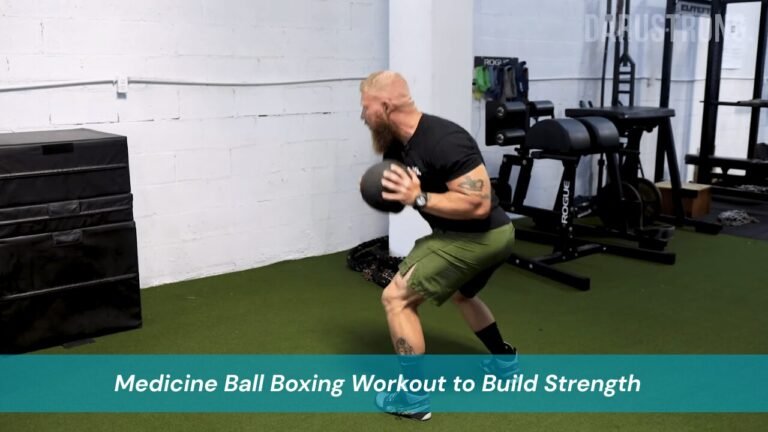Boxing has evolved far beyond the ropes of professional rings. Today, boxing training and fitness programs are taking over gyms, fitness studios, and even living rooms around the world. Why? Because this high-intensity, full-body workout not only sculpts an athletic physique it also builds mental toughness, coordination, and endurance like few other fitness regimens can.
Whether you’re a seasoned athlete, a weekend warrior, or just looking to shake up your routine, boxing offers something for everyone. But not all programs are created equal. From classic punch combinations to modern HIIT-style circuits, the structure of your training can determine whether you just break a sweat or break through your limits.
Let’s take a deeper look into what makes boxing training so effective and how to choose or build a program that fits your goals, experience level, and lifestyle.
Why Boxing Is More Than Just Throwing Punches
Contrary to popular belief, boxing isn’t just about brute strength or landing the hardest hit. It’s a science combining footwork, rhythm, timing, and explosive power. This makes it one of the most comprehensive training systems available today.
What sets boxing training and fitness programs apart is their multi-dimensional nature. Each session typically involves a blend of cardio conditioning, resistance training, agility drills, core work, and mental focus. You’re not just working on physicality, you’re training your mind to stay sharp under pressure.
Elite boxing coach Jason Van Veldhuysen of Precision Striking puts it this way: “You don’t have to be a fighter to train like one, but once you do, you’ll notice you start moving differently more efficiently. That’s because boxing fine-tunes every part of your body and mind.”
The Core Components of Effective Boxing Training
A well-rounded boxing fitness program includes several fundamental elements. Skipping one or more may limit your progress or lead to burnout or injury. The best programs combine skill-building with athletic conditioning, giving your body the stimulus it needs to adapt and improve over time.
Training usually starts with shadowboxing, which allows you to work on technique without resistance. It transitions into pad or bag work, targeting timing, power, and form. Then comes conditioning whether it’s jump rope intervals, explosive plyometric sets, or bodyweight resistance work. Many routines finish with core training, reinforcing rotational power and stability.
Recovery is just as critical. Top athletes schedule rest days and prioritize sleep, stretching, and proper nutrition to keep their performance sharp. Without proper recovery, your progress can stall.
In addition to the physical components, warm-ups and cool-downs play a vital role in minimizing injury and optimizing performance. Proper warm-ups prepare your cardiovascular system and muscles, while cool-downs help reduce lactic acid buildup, improve flexibility, and speed up recovery.
Tailoring Your Program to Your Fitness Goals
Not everyone walks into boxing with the same objectives. Some are chasing weight loss, others muscle tone, while a few may even be preparing for amateur bouts. Your goals will dictate how your boxing program is structured.
If your aim is fat loss and cardiovascular endurance, look for high-rep, low-rest interval training programs. These tend to focus on calorie burn and improving heart rate variability. Think along the lines of fast-paced rounds of mitt work, jump rope, and burpees.
On the other hand, those aiming for muscle definition and strength may favor programs with added resistance elements like weighted gloves, resistance bands, or circuit-style strength sets between bag rounds.
For individuals looking to improve coordination and agility, footwork drills and defensive movements should take center stage. These drills not only make you lighter on your feet but also improve neuromuscular coordination.
The Mental Edge of Boxing Programs
What’s often overlooked in most boxing training and fitness programs is the mental component. Boxing demands focus, discipline, and resilience. You’re not just learning to hit, you’re learning when not to. Each movement must be deliberate, calculated, and reactive.
This constant mental engagement builds more than just concentration; it enhances confidence. As you master new combinations or go longer in sparring rounds, that feeling of accomplishment spills over into other areas of life.
Research published in Frontiers in Psychology highlights how combat sports like boxing can improve self-regulation and reduce anxiety, especially in younger participants. It’s not just a physical transformation, it’s psychological growth, too.
Boxing also serves as an outlet for stress. The act of hitting a bag, pushing through fatigue, and staying focused on a goal provides a sense of catharsis that many find therapeutic. It’s no surprise that mental health professionals sometimes recommend structured boxing programs as part of treatment for anxiety or depression.
Do You Need a Gym to Start?
One of the greatest benefits of modern boxing fitness is flexibility. While nothing replaces the intensity of hitting a heavy bag under a coach’s watchful eye, you don’t necessarily need a boxing gym to get started. Thanks to online fitness training platforms and mobile apps, anyone can access structured boxing workouts from home.
Digital platforms provide video tutorials, performance tracking, and even live classes. This democratization of fitness means that high-level boxing training is no longer confined to elite athletes. You can now get the same coaching cues and workout intensity from the comfort of your home.
Companies like boxing essential (https://boxingessential.com/) offer digital boxing bootcamps and hybrid fitness coaching. With a 4.8-star rating from 250+ Google reviews, their online community proves that motivation and results don’t have to be confined to a physical space.
Virtual communities and leaderboards also provide a sense of accountability and motivation. Many programs even include personalized feedback, goal tracking, and access to private forums or coaching support.
Common Mistakes to Avoid in Boxing Fitness
While the benefits are numerous, boxing training isn’t foolproof. Beginners often fall into the trap of neglecting fundamentals in favor of flashy combos or overtraining too quickly. Poor technique can lead to joint strain, particularly in the shoulders and wrists.
Another common mistake is ignoring mobility work. Boxing can tighten the hips and shoulders if you don’t include mobility exercises in your routine. Incorporating dynamic stretches and foam rolling can prevent injury and improve performance.
Consistency is important but so is patience. The best way to see long-term success is to focus on mastering the basics before adding complexity. Quality movement will always beat quantity.
Moreover, it’s essential to balance your training with proper nutrition and rest. Boxing is intense and demanding, and your body needs fuel and recovery time to perform and progress.
FAQs
What is the best boxing program for beginners?
The best program for beginners focuses on fundamentals: footwork, stance, and simple combinations. Look for classes or platforms that emphasize technique over speed, especially in the first few weeks.
How often should I train if I want to see results?
For most people, three to five sessions per week is optimal. This allows for progress while giving your body time to rest and adapt.
Can I lose weight with boxing workouts alone?
Yes, many people lose weight through boxing training due to the high-calorie burn. However, combining it with a proper nutrition plan will accelerate results.
Do I need any equipment to get started at home?
While it helps to have hand wraps, gloves, and a heavy bag, you can start with just bodyweight routines and shadowboxing. As you progress, consider investing in basic gear for a more immersive experience.
Are boxing workouts safe for all ages?
Generally, yes. With proper instruction and supervision, boxing can be adapted for all ages and fitness levels. Always consult with a healthcare provider before beginning a new fitness regimen, especially if you have pre-existing conditions.
Conclusion
Boxing training and fitness programs offer a unique blend of physical power, cardio intensity, and mental discipline. Whether you’re training in a gym, online, or in your garage, the results can be transformative if you commit.
The beauty of boxing is that it meets you where you are. Whether you’re a total beginner or a fitness enthusiast looking for a new challenge, boxing has the ability to push your limits and help you evolve.
If you’re ready to challenge yourself in new ways, boxing might be the missing piece in your fitness puzzle. Ready to step into the ring? Learn more about online fitness training or explore tailored boxing workouts from boxing essential.




